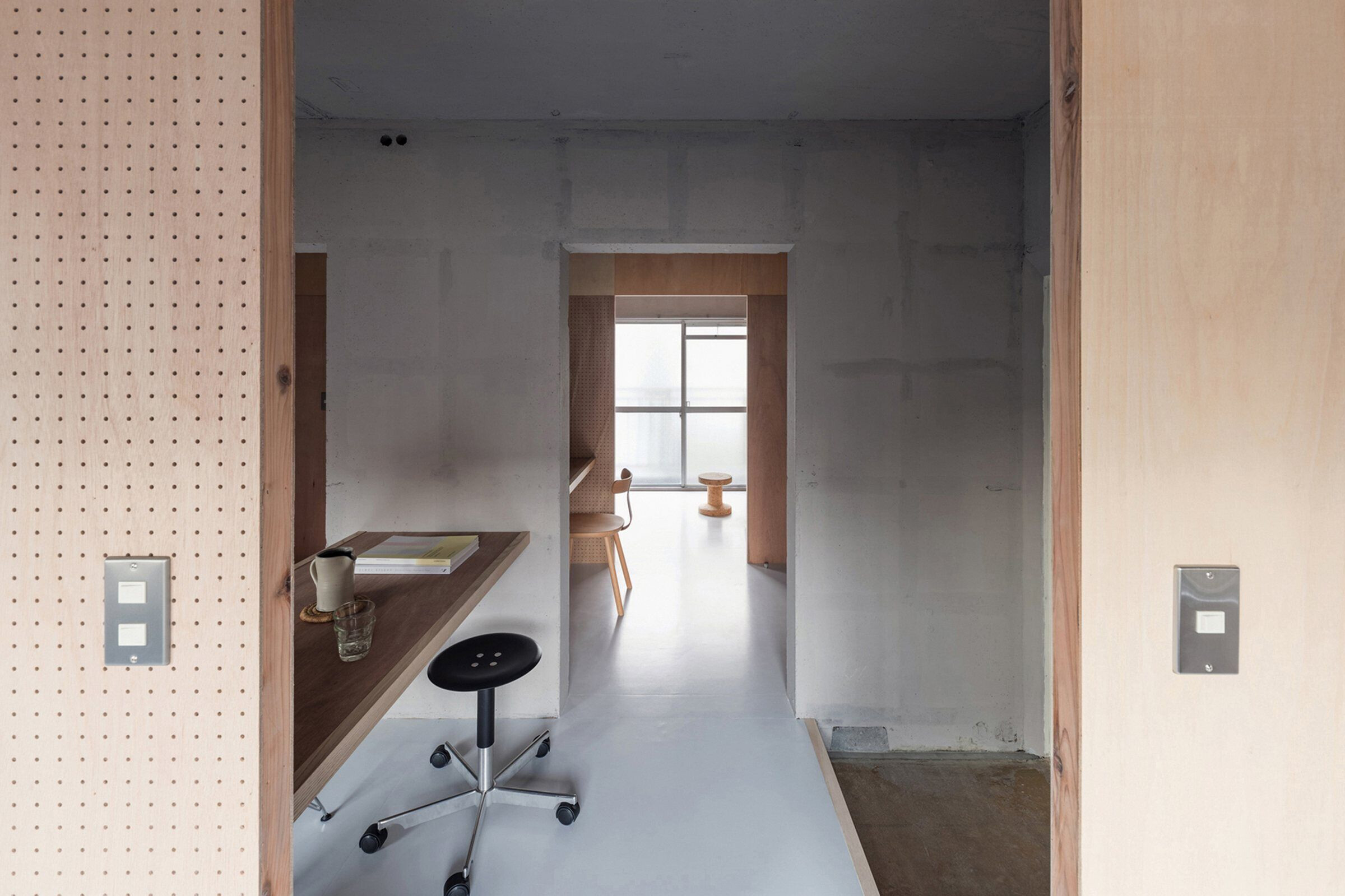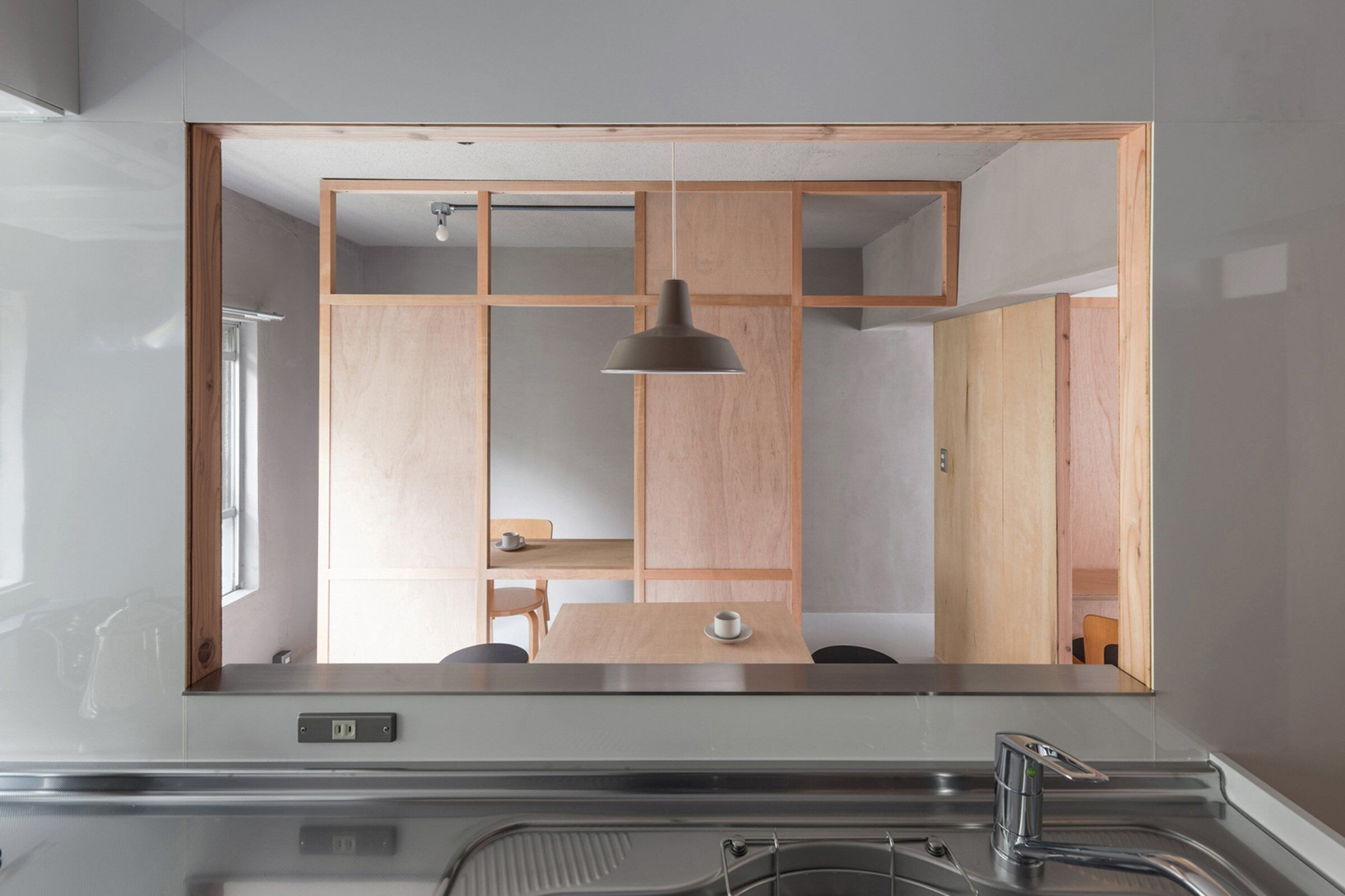Chayamadai Danchi is a typical example of a Japanese housing complex from the 1960s. Ample spacing between the neighbouring buildings, as well as the stairwell of the housing units allow for natural light to enter from both sides of the building, ensuring that every unit is well lit.

It was assumed that the concrete frame of the central structural wall and beams would remain. Through the process of renovation, we thought that it would be meaningful to utilize the existing structure without opposing its inherent spatiality. This project proposes a new way of living by considering the reinterpretation of the existing structure, and its relationship to the illuminated spaces that are unique to the housing complex.

In plan A and B, the existing structural wall with its two openings are left in the center, and the position of the newly inserted wall and frame is determined in accordance with the opening of the old frame. By reinterpreting the existing, we were able to realize a characteristic spatial composition that allows natural light and air to pass through.

In plan C, the large beam was left in the center, and multiple walls and frames with openings were inserted at the periphery to create a soft space where light can circulate. The greenery of the apartment complex and the buildings across the street can be seen through these new elements.
By consciously manipulating the materiality and scale of the inserted elements amid the presence of the existing concrete frame, we hoped to create a positive spatial experience of the surrounding environment.

Plan A
Two new walls were inserted parallel to the existing walls, creating four separate lanes. Spatial depth is achieved through the visual linear flow and resulting perspective on the North-South axis. We assumed that the relationship between family members would change as the children mature, and we wanted to create a sense of layeredness that allows for some privacy by having multiple thresholds in a loose succession.

Plan B
A new wall is inserted parallel to the existing wall, and a frame is placed perpendicular to the wall. By creating a figure-8 circulation in the open plan, the space is less divided and various scenes can overlap each other. The workspace and study area is located adjacent to the entrance, living room, and bedrooms to accommodate a variety of living styles.

Plan C
This unit is a single open space that allows for easy circulation with four intersecting walls with openings. The 45㎡ unit is divided into nine smaller parts in order to create a variety of different spaces. The free use of the space is encouraged by mixing areas for hobbies, socializing, reunion, and relaxation.





Material Used :
1. Flooring material: Vinyl floor sheet, Floorium plane NW, TORI
2. Wall: Lauan Plywood
3. Doors: Lauan Plywood
4. Interior lighting: Steel, CB-E26-CR13, Eiko Denki Kogyosho
5. Switch Plate: Stainless, Full Color Stainless Plate, Panasonic












































